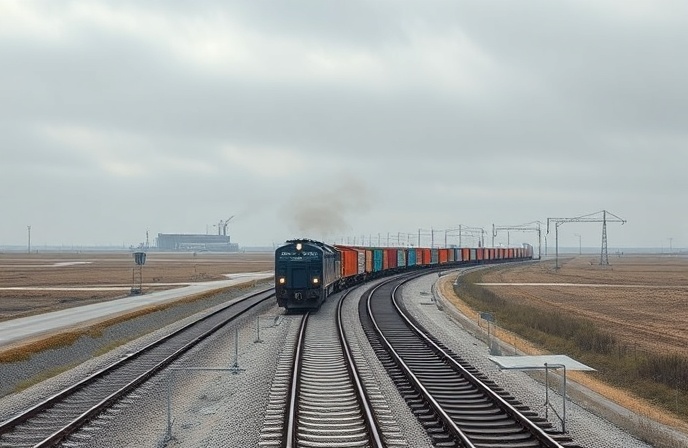Metrolink’s Extended Contract: A Public-Private Partnership Case Study

The Extended Metrolink Contract: A Case Study in Public-Private Partnerships in Light Rail
This article examines the recent extension of the KeolisAmey Metrolink Ltd (KAM) contract to operate and maintain the Metrolink tram system in Greater Manchester, UK, until July 2027. The extension, announced by Transport for Greater Manchester (TfGM), signifies a continued commitment to a public-private partnership (PPP) model for light rail operation. This decision underscores the perceived success of the existing partnership and highlights the strategic importance of the Metrolink within the broader vision of the Bee Network, a planned integrated transport system for Greater Manchester. We will delve into the factors contributing to the contract renewal, exploring the operational successes, challenges, and future objectives for the Metrolink network. The analysis will also consider the broader implications of this partnership model for the future of light rail management and the evolving role of public-private partnerships in the UK transport sector. The successful implementation of this partnership can serve as a valuable template for other cities contemplating similar collaborations for improving their light rail services. Finally, we will analyze the financial and operational impacts of such partnerships on both the public authority and the private operator.
Operational Successes and Service Enhancements
Since assuming operational control in 2017, KAM has overseen a significant increase in Metrolink’s operational mileage, achieving a remarkable 20% growth. This expansion reflects successful network development and increased passenger demand. The partnership has also focused on enhancing service reliability and punctuality, improvements directly benefiting commuters. These achievements underscore the positive impact of a focused partnership aiming for continuous improvement. However, the article does not quantify the improvement in punctuality and reliability; further data is required to analyze the magnitude of these improvements.
Addressing Challenges: Fare Evasion and Antisocial Behavior
The extended contract acknowledges the ongoing need to address challenges such as fare evasion and antisocial behavior. TfGM’s commitment to tackling these issues demonstrates a proactive approach to improving the passenger experience and ensuring the long-term viability of the system. Effective strategies addressing these problems could include increased security presence, improved ticketing systems, and public awareness campaigns. Implementing robust fare collection mechanisms, coupled with increased security measures, will be crucial to maintaining a safe and financially sustainable system. Furthermore, collaboration with local law enforcement agencies may be necessary to tackle more serious instances of antisocial behavior.
Future Plans and Integration with the Bee Network
The contract extension aligns with TfGM’s ambitious Bee Network project, aiming to create a London-style integrated transport system in Greater Manchester. The plan to introduce a touch-in-touch-out (TITO) fare system by 2030 will improve seamless travel across different modes of transport. The integration of Metrolink within the Bee Network will necessitate further improvements in operational efficiency and fare management. This requires interoperability between different systems and technologies, a significant undertaking that demands careful planning and execution. This initiative also needs strong stakeholder collaboration to ensure its success and public acceptance.
The Public-Private Partnership Model: A Critical Analysis
The extended KAM contract exemplifies the growing trend towards public-private partnerships in managing public transport infrastructure. This model offers potential benefits such as improved efficiency and the injection of private sector expertise. However, it’s crucial to carefully balance the benefits with potential risks. These risks can include conflicts of interest, a lack of transparency, and challenges in coordinating the objectives of both partners. Thorough performance monitoring and robust contractual agreements are essential to mitigate such risks. The effectiveness of this partnership model needs to be regularly reviewed to ensure value for money for taxpayers and continuous improvement in service delivery.
Conclusions
The extension of the KeolisAmey Metrolink contract to 2027 represents a significant endorsement of the existing public-private partnership between KAM and TfGM. The substantial improvements in operational mileage, along with the commitment to enhancing passenger experience by tackling fare evasion and antisocial behavior, point towards a successful collaboration. The integration of Metrolink within the wider Bee Network presents both exciting opportunities and significant challenges. Successful implementation will depend on a commitment to continuous improvement, proactive problem-solving, and strong communication between the public and private partners. However, while the partnership has yielded positive results thus far, it’s vital to acknowledge that the PPP model isn’t without inherent complexities. Ongoing monitoring and evaluation of performance indicators, along with transparent communication to the public, are crucial for sustaining the success of this initiative and ensuring that it remains a viable and beneficial model for delivering efficient and effective light rail services in Greater Manchester, and potentially serving as a model for other cities considering similar partnerships. The long-term success of the partnership hinges on the continued commitment of both TfGM and KAM to collaborative problem-solving, strategic planning, and a shared vision for the future of light rail in Greater Manchester. The careful monitoring of key performance indicators (KPIs) such as punctuality, reliability, passenger satisfaction and cost-effectiveness will prove pivotal in assessing the ongoing viability of this model and informing future light rail management strategies.



